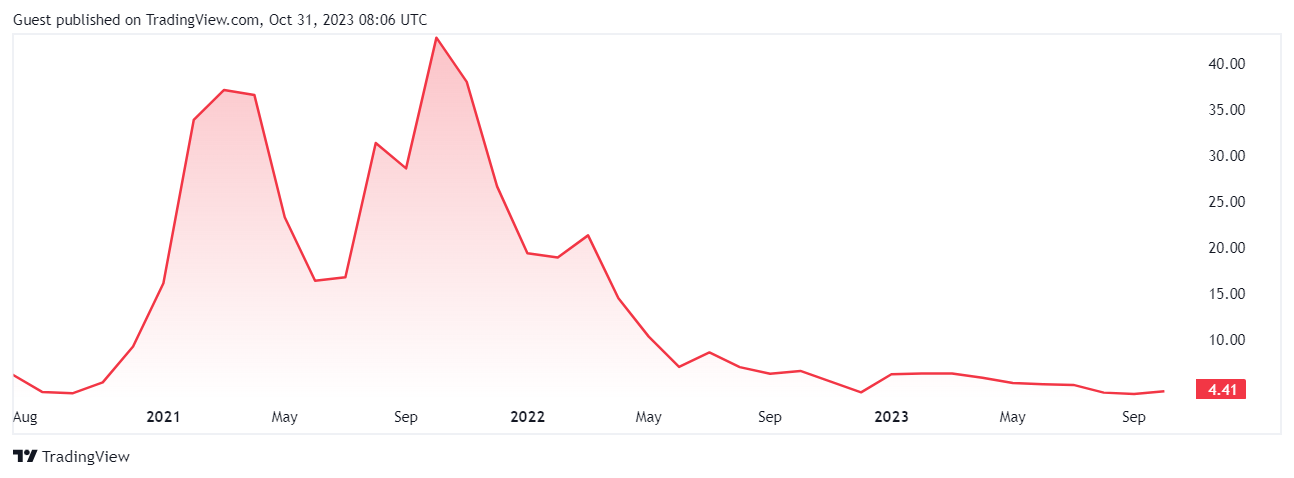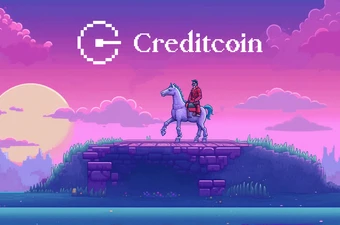
What is Polkadot ($DOT)
Polkadot is the first layer-0 blockchain that provides shared security and secure interoperability to layer-1 blockchains. It uses a multi-chain architecture, where multiple parallel blockchains (known as "parachains") can operate simultaneously and communicate with each other.
Polkadot's core network is called the Relay Chain, where other blockchains connect and communicate with each other. By hosting blockchains, the relay chain also handles their security and transactions, allowing communication between different blockchains to function seamlessly.
Parachains are parallel chains that run alongside the main Polkadot chain and are designed to be interoperable with other blockchains. Parachains are user-created networks, which can be customized for different use cases. Transactions in parachains benefit from the same security as the main chain.
As a result, Polkadot allows for easy data transfer between blockchains. For instance, the Moonbeam project utilizes Polkadot to establish a multi-chain platform for decentralized applications, while the Chainlink project employs Polkadot to offer secure and dependable data feeds for smart contracts.
Polkadot is built using Substrate, a modular framework that enables developers to build blockchains quickly and efficiently, with a high degree of customization. Substrate provides the tools and components required to create a customized blockchain from scratch or to modify existing blockchains to better suit particular use cases.
Source & Copyright © Polkadot Network
DOT is the native cryptocurrency of the Polkadot network. It is used for a variety of purposes within the network, including paying transaction fees, participating in governance decisions, and staking to help secure the network.
Polkadot applies the NPoS (Nominated Proof of Stake), which is an adaptation of Proof of Stake (PoS). In NPoS, token holders in the Polkadot network can nominate validators to secure the network and validate transactions. Validators are responsible for adding new blocks to the blockchain and ensuring that the network operates smoothly.
To participate as a validator on the Polkadot network and receive incentives, users must obtain DOT and "stake" them by securing them as collateral. Moreover, users have an option to delegate their DOT to established validators, who will use them to validate transactions and generate new blocks on their behalf, while receiving a portion of the transaction fees and incentives earned by the validator.
Who Are the Founders and Investors of Polkadot
Polkadot was developed by Gavin Wood along with Robert Habermeier, and Peter Czaban. Polkadot's origins are connected with Ethereum's history, as Gavin Wood served as Ethereum’s Chief Technology Officer and a core developer. He created the Solidity, Ethereum's smart contract programming language. In 2016, he departed Ethereum to start the development of Polkadot. In October of that year, he pulbished the white paper for Polkadot. Gavin Wood is also credited with the origination of the term "Web3" back in 2014.

Source & Copyright © Polkadot Network
In 2017, Wood also co-founded the Web3 Foundation, a not-for-profit organization dedicated to backing the research and development initiatives of Polkadot, as well as managing its fundraising activities. In October, the foundation held a successful Initial Coin Offering (ICO), amassing $145 million in just two weeks, ranking it among the most substantial ICOs of that period. A subsequent private sale in 2019 also raised an additional $43 million.
In addition to his work with Polkadot and the Web3 Foundation, Wood holds the position of CEO at Parity Technologies, a blockchain infrastructure company.
What Is Polkadot Price Today
The current DOT price today is $3.36 with a 24-hour trading volume of $236,011,513.
What Is the All-time High for Polkadot (DOT)
The all-time high for the DOT token occurred on November 4, 2021, when it reached a price of $55 USD. The main reason behind the surge was the launch of Polkadot's parachain auctions which helped in showcasing the network’s capabilities, generating excitement and interest among investors and developers.
Parachain auctions are designed to allocate limited parachain slots to various blockchain projects in a decentralized and transparent manner. Parachain slots are limited spaces available on the Relay Chain for these parachains to connect to.

Source & Copyright © Tradingview
What Is the All-time Low for Polkadot (DOT)
The all-time low of the DOT token occured on August 20, 2020, and was influenced by its redenomination process. The original Polkadot network underwent a redenomination of its token on August 21, 2020, with a new DOT being 100 times smaller than the old DOT. This process was voted on by the community and was similar to a stock split in traditional finance, meant to lower the entry barrier for new investors.
The price of DOT fell to around $2.69 USD immediately following the redenomination.
What is the Market Cap of Polkadot (DOT)
DOT is now holding a market capitalization of $6,930,565,016. There are 1,522,267,060 of DOT coins in circulation. Check this page regularly to stay updated on DOT's market cap.
How and Where to Buy Polkadot DOT Coin
The DOT token, native to the Polkadot network, can be acquired through various channels, primarily cryptocurrency exchanges, both centralized and decentralized.
How to Buy DOT on CEX
- Select a cryptocurrency exchange that lists DOT for trading. Some of the popular exchanges include Binance, Kraken, Coinbase, and KuCloin. Ensure that the exchange operates in your country and adheres to necessary security and regulatory standards.
- Sign up for an account on the chosen exchange. This process typically requires you to provide some personal information and go through a verification process to comply with Know Your Customer (KYC) regulations.
- Deposit funds into your exchange account. This can be done using various methods such as bank transfers, credit/debit cards, or even other cryptocurrencies, depending on the exchange’s offerings.
- Once your funds are deposited, navigate to the trading section of the exchange, and search for the DOT trading pair that matches your deposited currency (DOT/USD, DOT/BTC). Create an order. You can choose from different types of orders, such as market or limit orders, depending on your preference and strategy. Enter the amount of DOT you wish to purchase, and execute the trade.
How to Buy DOT on DEX
Buying DOT on a decentralized exchange (DEX) is a slightly different process compared to a centralized exchange.
- Choose a decentralized exchange and ensure that the DEX supports DOT trading. Some DEXs operate on specific blockchains and might not have DOT available. Popular options for decentralized trading are Pancake Swap, Biswap, and MDEX.
- You need a cryptocurrency wallet that supports DOT and can connect to decentralized exchanges. Examples include MetaMask (with added support for Polkadot), Polkadot.js, or other compatible wallets.Go to the DEX’s website and connect your wallet. This usually involves clicking a “Connect Wallet” button and following the prompts.
- Ensure you have a cryptocurrency in your wallet to trade for DOT. If you don’t have a compatible cryptocurrency, you might need to buy some on a centralized exchange and transfer it to your wallet.
- On the DEX platform, navigate to the swap or exchange section. Select the cryptocurrency you want to swap from and choose DOT as the asset you want to receive. Input the amount you wish to swap and review the transaction details, including any fees and the exchange rate. Confirm the transaction in your wallet, and wait for the swap to complete.
How to Sell Polkadot DOT Coin
Selling DOT on CEX is the reverse process. Navigate to the trading section, select a DOT trading pair, and place a sell order. Enter the amount of DOT you wish to sell and confirm the transaction details. Once your sell order is executed, and you have received the funds in your exchange account, navigate to the withdrawal section. Choose the currency you have converted your DOT to, and enter your withdrawal destination, which could be a bank account or another wallet. Confirm the withdrawal and wait for the funds to be transferred.
If you want to sell your DOT on DEX, ensure you have a cryptocurrency wallet that supports DOT and can interact with DEXs. Connect this wallet to the DEX. Navigate to the DEX’s trading or swap interface and choose DOT as the asset you want to sell and select the cryptocurrency you wish to receive in exchange. Enter the amount of DOT you want to sell and review the transaction details, including exchange rate and fees. Confirm the details in your wallet, allowing the smart contract to execute the trade. Wait for the transaction to be processed on the blockchain.
Is Polkadot DOT Coin Legit
Although DOT experienced two bullish cycles in 2021 and reached an all-time high of $55 in early November, the token has since been consistently declining. Compared to other high market-cap altcoins, DOT has been hit the hardest by the prolonged bear market.
Currently, the DOT token is struggling to stay above $5, as its price is following a downward trend in the daily chart and forming a descending triangle pattern. Furthermore, there has been a noticeable lack of activity in the Polkadot ecosystem this entire year, and the price of the token has been declining accordingly.
Nevertheless, Polkadot remains one of the most popular tokens on the market. Here are a few reasons that contribute to its legitimacy.
Gavin Wood has a solid reputation in the blockchain community and Polkadot's development team consists of experienced professionals in the field.
Polkadot’s development process is open-source, meaning that anyone can review, propose changes, or contribute to the codebase. The project encourages community participation and governance, allowing DOT holders to have a say in the network’s future development.
Since its launch, Polkadot has seen a growing number of projects building on its network, contributing to a vibrant ecosystem. Various projects across DeFi, NFTs, gaming, and other sectors are opting to build on Polkadot due to its unique features and capabilities.
What Makes Polkadot Unique
Polkadot stands out among prominent blockchain systems due to its unique approach to scalability via multi-chain architecture, the collective security provided by a central relay chain along flexible consensus mechanisms. The system enhances throughput significantly, while its cross-chain capabilities allow for seamless transfers of various data types and assets across chains.
Polkadot eliminates barriers for project developers, ensuring compatibility with existing platforms such as Ethereum. This is achieved without forcing a choice between isolated blockchain networks, thanks to its well-defined community governance and automated updates.
Leveraging the Substrate blockchain framework, Polkadot enables other projects utilizing Substrate to swiftly and effortlessly roll out custom chains, which can operate natively on the Polkadot network.
Polkadot value lies in its ability to complement existing blockchain systems, rather than out-competing them. This complementary role has already been acknowledged by many projects within its ecosystem, spanning smart contracts, decentralized finance (DeFi), oracles, digital collectibles (NFTs), gaming, and more.
Polkadot is not a smart contract platform in itself. Rather, it provides the necessary infrastructure that allows decentralized app (dApp) developers to implement smart contracts within an interoperable network of extensive functionalities.
How to Keep Your Polkadot DOT Safe
First and foremost, DOT holders are advised to consider using a hardware wallet. When setting up your wallet, users should create a strong and unique passphrase, and backup recovery phrase in a secure and private location. This recovery phrase will be necessary for restoring access to users funds in case the wallet is lost or damaged.
Users are also advised to enable all available security features on the wallet, such as two-factor authentication (2FA) and biometric verification if supported. Be vigilant against phishing attempts; never enter your private keys or recovery phrase on suspicious websites, and verify the authenticity of any communication claiming to be from wallet support or related services. Keep your wallet’s firmware and any associated software up to date, as updates often include security enhancements.
When transacting, double-check the recipient's address and the transaction details before confirming. Consider spreading your holdings across multiple wallets if you have a substantial amount of DOT, as this can reduce risk.
Pros and Cons of Polkadot
| Pros | Cons |
| Higher transaction throughput, making it more scalable than many traditional blockchains | Parachain slots are limited |
| Parachains benefit from the pooled security of the entire network, which is maintained by the relay chain | Native Polkadot.js wallet is not user-friendly |
| Polkadot allows different blockchains to transfer data independently | The network’s advanced features and capabilities introduce a level of complexity |
| Different parachains can employ different consensus mechanisms | Dependence on Relay Chain for security and interoperability |
Summary
Polkadot is a layer zero multi-chain blockchain platform designed to enable different blockchains to transfer messages and values in a trust-free fashion, facilitating interoperability and scalability. Developed by the Web3 Foundation and founded by Gavin Wood, Polkadot introduces a unique architecture consisting of a central Relay Chain, multiple Parachains, and Bridges for external network connections. Parachains operate independently but benefit from the shared security and interoperability provided by the Relay Chain. Polkadot’s consensus mechanism, Nominated Proof-of-Stake (NPoS), and on-chain governance model empower token holders to participate in decision-making.














